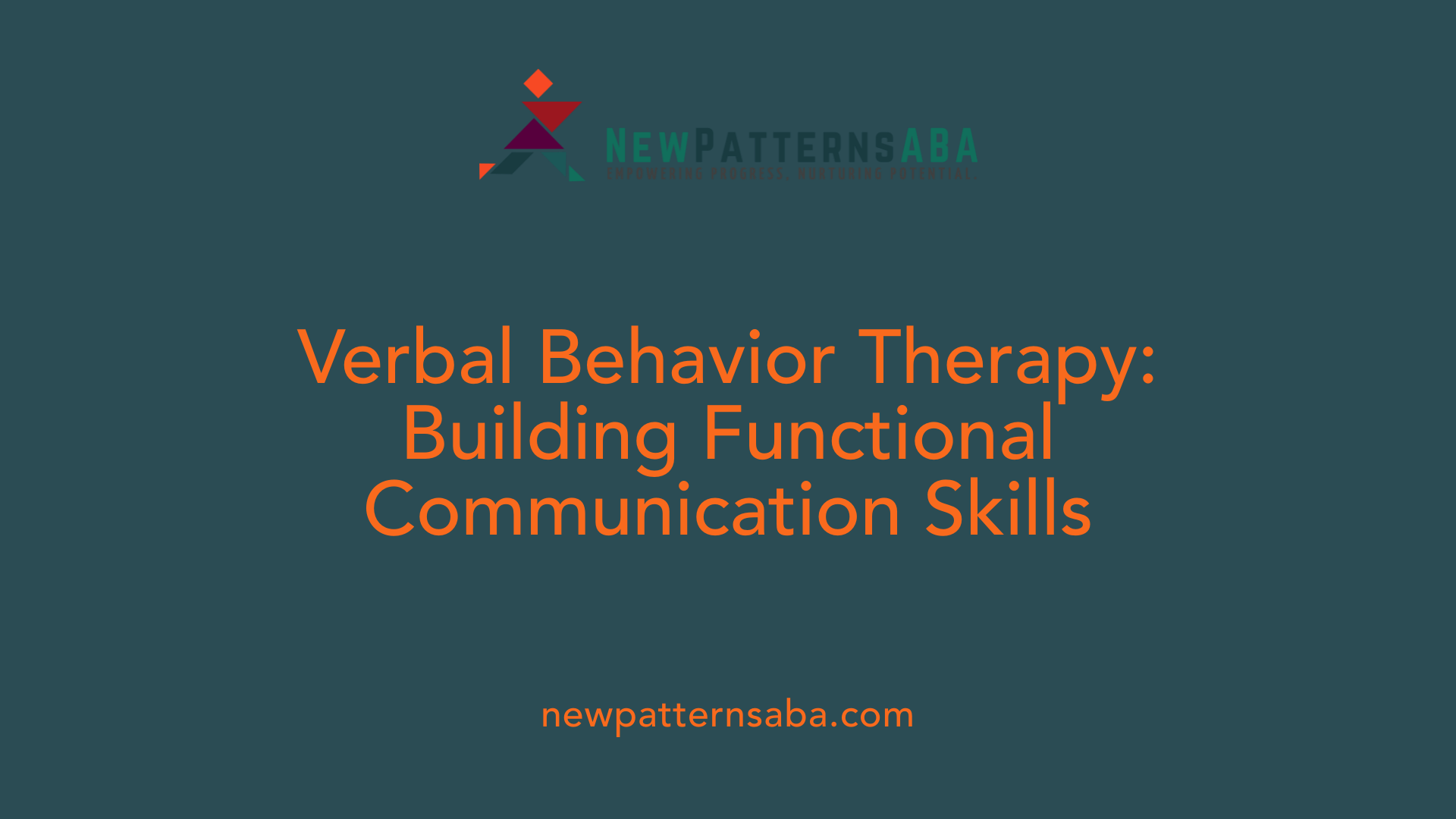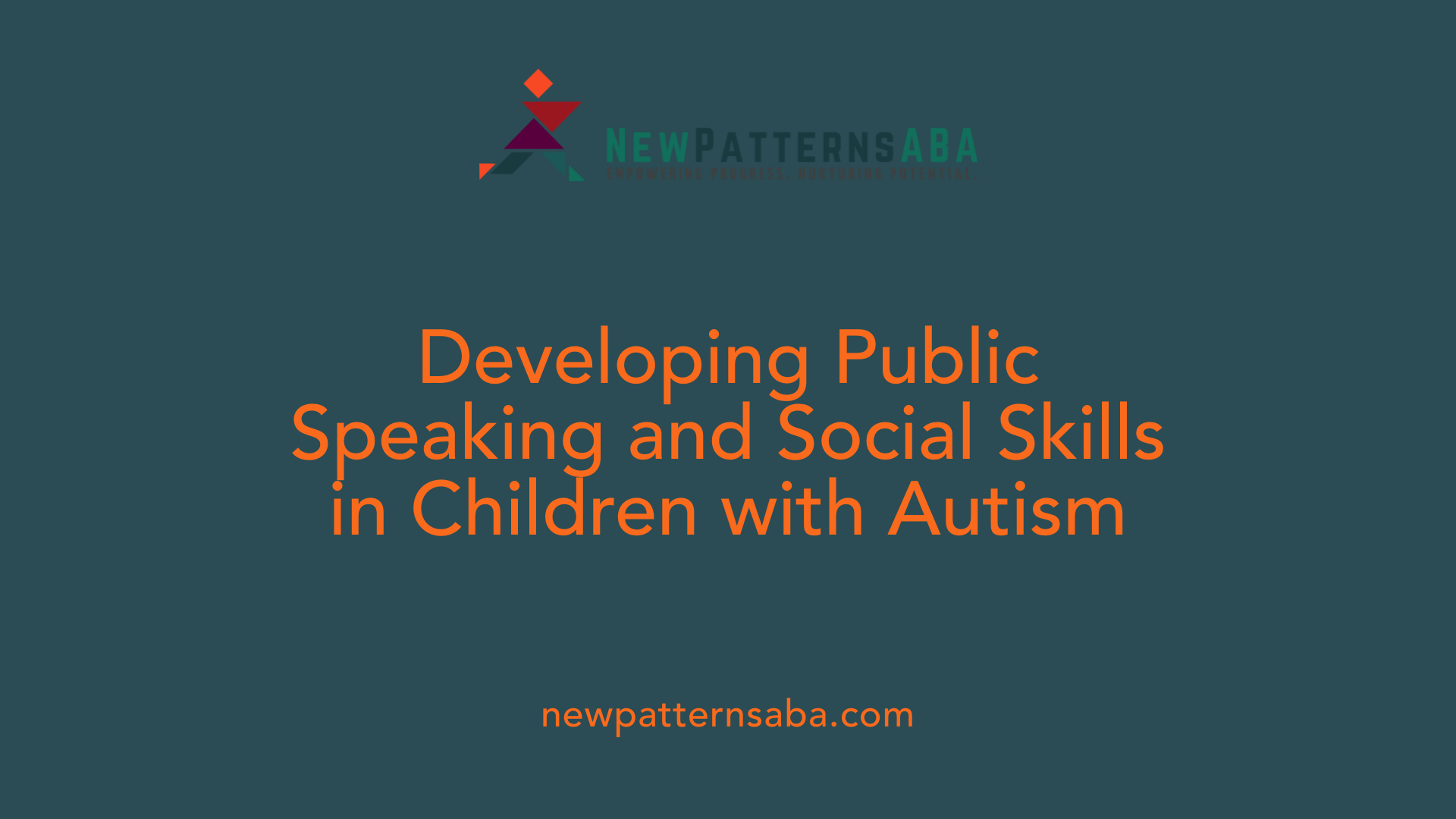Enhancing Communication Skills in Autistic Children Through Specialized Therapies
Understanding the Foundations of Communication Support
Effective communication is a crucial developmental milestone for all children, and it presents unique challenges for autistic children. Support for public speaking and communication in autistic children involves specialized therapies grounded in behavioral science and tailored interventions. This article explores how therapies, particularly Applied Behavior Analysis (ABA) and its derivative, Verbal Behavior (VB) therapy, contribute to improving communication skills and public speaking abilities in autistic children.
Applied Behavior Analysis: Core Principles and Role in Autism Therapy

What is Applied Behavior Analysis (ABA) therapy?
Applied Behavior Analysis (ABA) therapy is a scientifically validated approach rooted in the principles of learning and behavior. It focuses on increasing helpful behaviors and decreasing harmful ones by using strategies such as positive reinforcement, prompting, and functional behavior assessments. ABA therapy is personalized, with treatment plans designed by trained professionals, including Board Certified Behavior Analysts (BCBAs). It can be delivered in various settings like homes, schools, or clinics and has been widely used since the 1960s to improve communication, social interaction, attention, and daily living skills in children with autism spectrum disorder (ASD).
How does ABA therapy support individuals with autism?
ABA therapy supports people with autism by breaking down complex skills into small, teachable parts. Therapists analyze behavior through the ABC model (Antecedent-Behavior-Consequence) to identify what triggers behaviors and the rewards maintaining them. Using positive reinforcement and structured teaching methods, ABA helps increase helpful behaviors and reduce challenging ones. Therapy plans reflect an individual’s unique strengths and needs, aiming to develop communication, social skills, and independence, ultimately improving quality of life.
What are the core principles of behavioral analysis used in autism therapy?
Behavioral analysis relies on several foundational principles:
- Positive reinforcement: Rewarding desirable behaviors to encourage their recurrence.
- Antecedent-Behavior-Consequence (ABC) model: Understanding what happens before and after a behavior to guide interventions.
- Individualization: Tailoring therapy programs based on ongoing data and assessment.
- Techniques: Including task analysis, prompting, fading prompts gradually, shaping new behaviors, and modeling desired actions.
These principles create a systematic approach to teaching new skills and managing behaviors effectively.
What types of professionals provide ABA therapy?
ABA therapy is delivered by a multidisciplinary team, primarily including:
- Board Certified Behavior Analysts (BCBAs): Experts who design and oversee treatment plans.
- Registered Behavior Technicians (RBTs): Professionals who implement therapy directly with clients.
- Board Certified Assistant Behavior Analysts (BCaBAs): Assistants working under BCBA supervision.
- Licensed clinical therapists engaging in ABA techniques.
Additionally, collaboration often occurs with speech-language pathologists and special educators to address communication and learning needs.
Are there any ethical considerations in providing ABA therapy?
Ethical practice in ABA therapy emphasizes protecting clients' rights and well-being. Key considerations include:
- Informed consent: Clearly explaining treatment goals, methods, risks, and benefits.
- Professional boundaries: Avoiding conflicts of interest and dual relationships.
- Adherence to ethical codes: Following guidelines like the Behavior Analyst Certification Board (BACB) Code of Ethics.
- Respect for individual differences: Personalizing interventions to honor each person's preferences and needs.
Ongoing education and reflection help practitioners provide respectful, effective, and ethical services.
Verbal Behavior Therapy: A Specialized Communication Approach

What is Verbal Behavior (VB) Therapy?
Verbal Behavior therapy is a communication-focused intervention grounded in Applied Behavior Analysis (ABA) and the language theories of B.F. Skinner. Unlike typical language teaching methods that emphasize labeling objects, VB therapy connects words to their functional purposes, helping learners understand why and when to use language.
What are the Language Operants in VB?
In VB therapy, language is categorized into four main operants:
- Mand: a request for something desired.
- Tact: a comment or labeling of something in the environment.
- Intraverbal: a response to another person's verbal behavior.
- Echoic: repetition of heard words or sounds.
These operants provide the framework for shaping meaningful communication.
How Does VB Therapy Develop Communication Skills?
VB therapy usually begins by teaching mands, or requests. When a child asks for an item correctly, they immediately receive it, reinforcing the communication's purpose. Over time, this encourages more complex language development through gradual shaping of skills across the language operants.
What Role Do Errorless Learning and Reinforcement Play?
Errorless learning is a strategy employed in VB therapy where prompts are given instantly to guide correct responses. These prompts are gradually faded to foster independent communication. The use of immediate and consistent reinforcement, such as providing requested items, strengthens desired verbal behaviors.
Who Benefits From VB Therapy?
VB therapy supports a range of learners, including children who are beginning language, older students with delays, and individuals using visual aids or assisted communication. Therapists delivering VB interventions include psychologists, BCBAs, speech-language pathologists, and special educators, making it a flexible and accessible approach for many with communication challenges.
Augmentative and Alternative Communication Tools for Enhancing Public Speaking

What is the PECS system and its features?
The Picture Exchange Communication System (PECS) is an augmentative communication tool grounded in ABA principles. It begins with teaching requesting skills by exchanging pictures or symbols and does not require verbal prompts initially. PECS is often used as a bridge toward other communication methods, helping individuals build early functional communication skills.
What are speech-generating devices and their advantages?
Speech-generating devices (SGDs) produce spoken words through electronic means, making them portable tools that promote social interaction. They are widely accepted among peers and provide flexible communication options. However, SGDs usually require additional materials for use, such as batteries or specialized software.
What are communication boards and their variations?
Communication boards are accessible tools used to support communication, often fostering parent-child bonding. They come in low-tech versions—simple printed boards—as well as high-tech varieties equipped with electronic features. While high-tech boards offer advanced functionalities, they tend to be expensive.
How is sign language used as a communication tool?
Sign language is an efficient and comprehensive mode of communication, allowing for expressive and receptive language without speech. It is not universally applicable since it requires significant learning time and may not be practical for every individual or setting.
What does research say about the effectiveness of AAC tools?
Research shows PECS and SGDs are both effective in teaching requesting skills in children with autism. Some studies indicate similar success rates between these two approaches, highlighting the importance of tailoring communication strategies to individual needs.
| AAC Tool | Key Characteristics | Advantages |
|---|---|---|
| PECS | Picture exchange, no verbal prompts initially | Bridges to other communication methods |
| Speech-generating Devices | Electronic speech output, portable | Promotes social interaction, peer acceptance |
| Communication Boards | Low-tech or high-tech variations | Accessible, supports bonding, flexible use |
| Sign Language | Visual-gestural language | Comprehensive, efficient but requires learning |
These tools are often integrated within therapies for autism to enhance communication and support public speaking abilities effectively.
Collaborative Approaches: Integrating ABA and Speech-Language Pathology

What is the role of speech-language pathologists in communication therapy?
Speech-language pathologists (SLPs) play a crucial role in communication therapy for individuals with autism. They specialize in assessing and treating speech, language, and communication difficulties, working closely with behavior analysts to optimize outcomes. By collaborating, SLPs ensure communication strategies meet each learner's unique needs, such as addressing auditory processing difficulties and non-verbal communication challenges.
How are ABA methods combined with speech therapy?
Applied Behavior Analysis (ABA) methods are often integrated into speech therapy to enhance the effectiveness of communication interventions. ABA's systematic use of reinforcement and corrective feedback complements the goals of speech therapy by teaching functional communication skills and encouraging language development in natural settings. Techniques from ABA, like discrete trials and naturalistic interventions, support language acquisition within therapy sessions.
How are communication interventions tailored to individual needs?
Communication interventions are highly individualized, considering factors such as the child's current language abilities, sensory sensitivities, and preferred modes of communication. Professionals combine ABA strategies with speech therapy assessments to design interventions that may include augmentative communication tools, verbal prompts, or visual supports. This ensures that therapy addresses specific challenges and builds on strengths for meaningful language progress.
How are auditory processing and non-verbal cues challenges addressed?
Children with autism often face challenges interpreting auditory information and non-verbal cues. Speech-language pathologists, together with ABA therapists, create targeted strategies to improve comprehension and social communication. This may involve using visual aids, simplifying language, and practicing turn-taking and eye contact through naturalistic ABA approaches, facilitating better understanding and social engagement.
What are naturalistic applications of ABA in communication?
Naturalistic ABA interventions, such as Pivotal Response Treatment (PRT), integrate learning opportunities into everyday activities. These approaches encourage spontaneous communication by reinforcing social interactions and language use in natural contexts. Speech-language pathologists and ABA therapists collaborate to embed communication goals within play, daily routines, and social exchanges, promoting generalization and functional language use beyond the therapy setting.
Public Speaking and Social Skills Development in Autistic Children

Therapies focusing on social communication skills
Several therapies specifically target social communication challenges commonly faced by autistic children. These approaches help develop appropriate interaction strategies and build confidence in social settings, including public speaking.
Role of Relationship Development Intervention (RDI)
Relationship Development Intervention (RDI) emphasizes fostering social skills such as turn-taking, eye contact, and interpreting body language. Goals are personalized based on thorough individual assessments, allowing the child to gradually develop natural conversational abilities essential for effective social communication.
Sensory Integration Therapy impact on communication
Sensory Integration Therapy addresses hypersensitivity to sensory stimuli, which can interfere with communication and participation in social settings. By gradually exposing the child to various sensory inputs, this therapy helps reduce over-responsiveness, enabling better focus and comfort during communication activities like public speaking.
Building turn-taking, eye contact, body language comprehension
Effective communication relies on social skills including turn-taking during conversations, maintaining appropriate eye contact, and understanding body language cues. Therapeutic interventions such as RDI specifically work on these behaviors, enhancing a child's ability to interact smoothly and confidently with others.
Supporting confidence in public speaking contexts
By combining social communication therapies with sensory and behavioral support, autistic children can build the skills and confidence needed for public speaking. Structured practice opportunities and positive reinforcement, often utilized within Applied Behavior Analysis frameworks, further encourage successful participation in group and public settings.
Empowering Autistic Children Through Tailored Communication Support
Supporting autistic children in developing public speaking skills requires a multifaceted approach rooted in behavioral science and personalized interventions. Applied Behavior Analysis and Verbal Behavior therapy provide strong foundations to enhance language and communication abilities, while augmentative and alternative communication tools offer vital support for diverse needs. Collaboration between behavior analysts and speech-language pathologists ensures that interventions are comprehensive and responsive to each child's unique challenges. Moreover, social skills-focused therapies including Relationship Development Intervention and Sensory Integration Therapy address critical aspects of effective public speaking such as social cues and sensory sensitivities. Together, these approaches create pathways for autistic children to confidently express themselves and engage successfully in public speaking, fostering greater independence and inclusion.
References
- Verbal Behavior Therapy
- 7 Autism Behavior and Communication Strategies
- 4 Methods for Increasing Communication Within Applied ...
- Applied Behavior Analysis and Communication Services
- Applied Behavior Analysis (ABA)
- The Top 10 Reasons Children With Autism Deserve ABA
- Applied Behavior Analysis (ABA)
- 6 Benefits of ABA Therapy for Children with Autism






